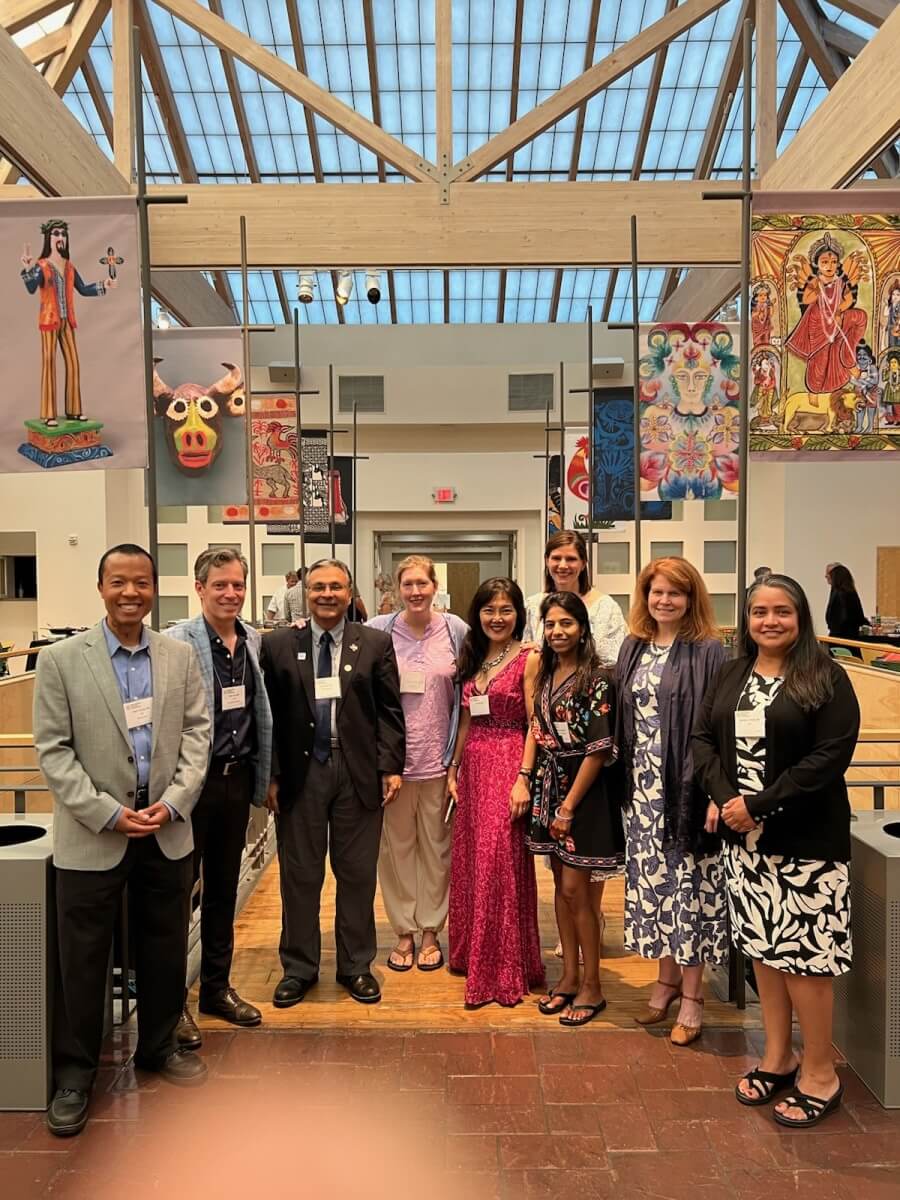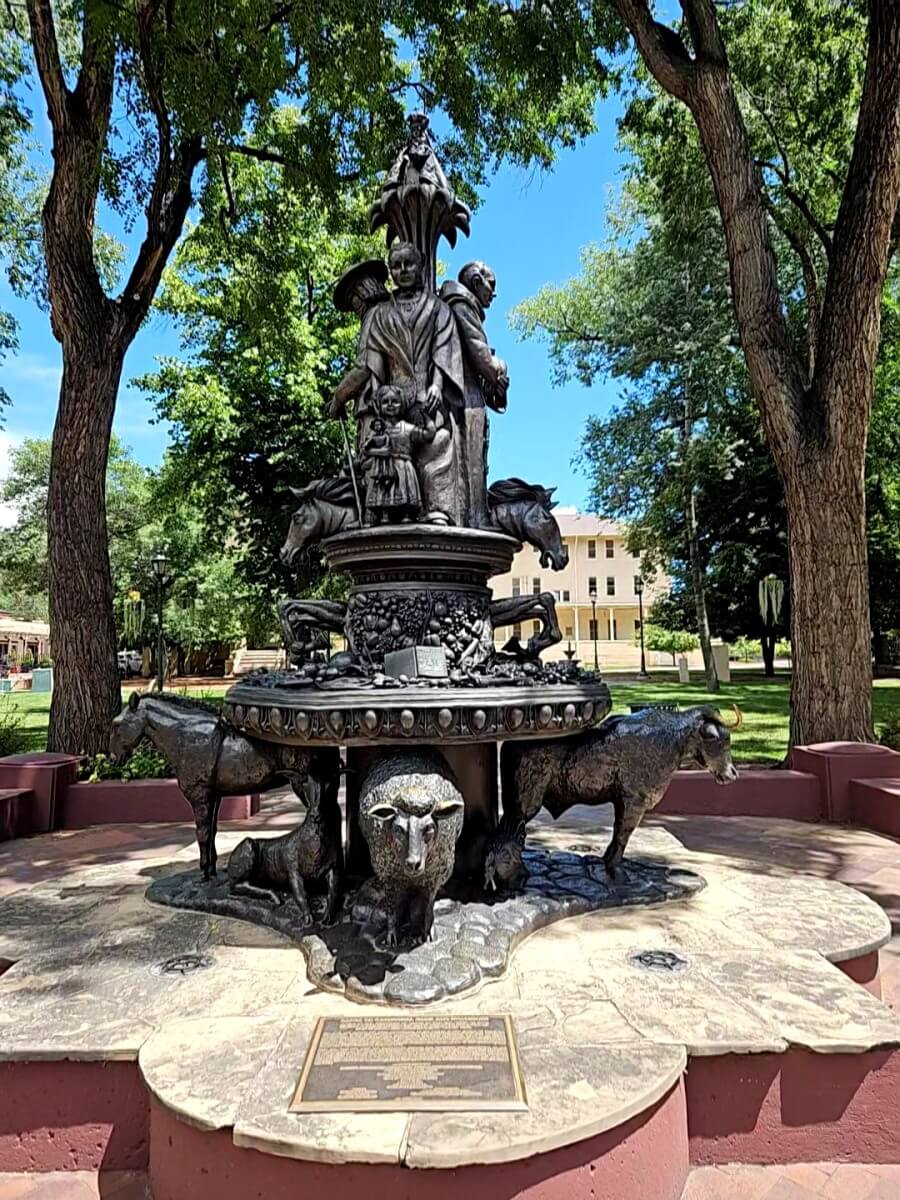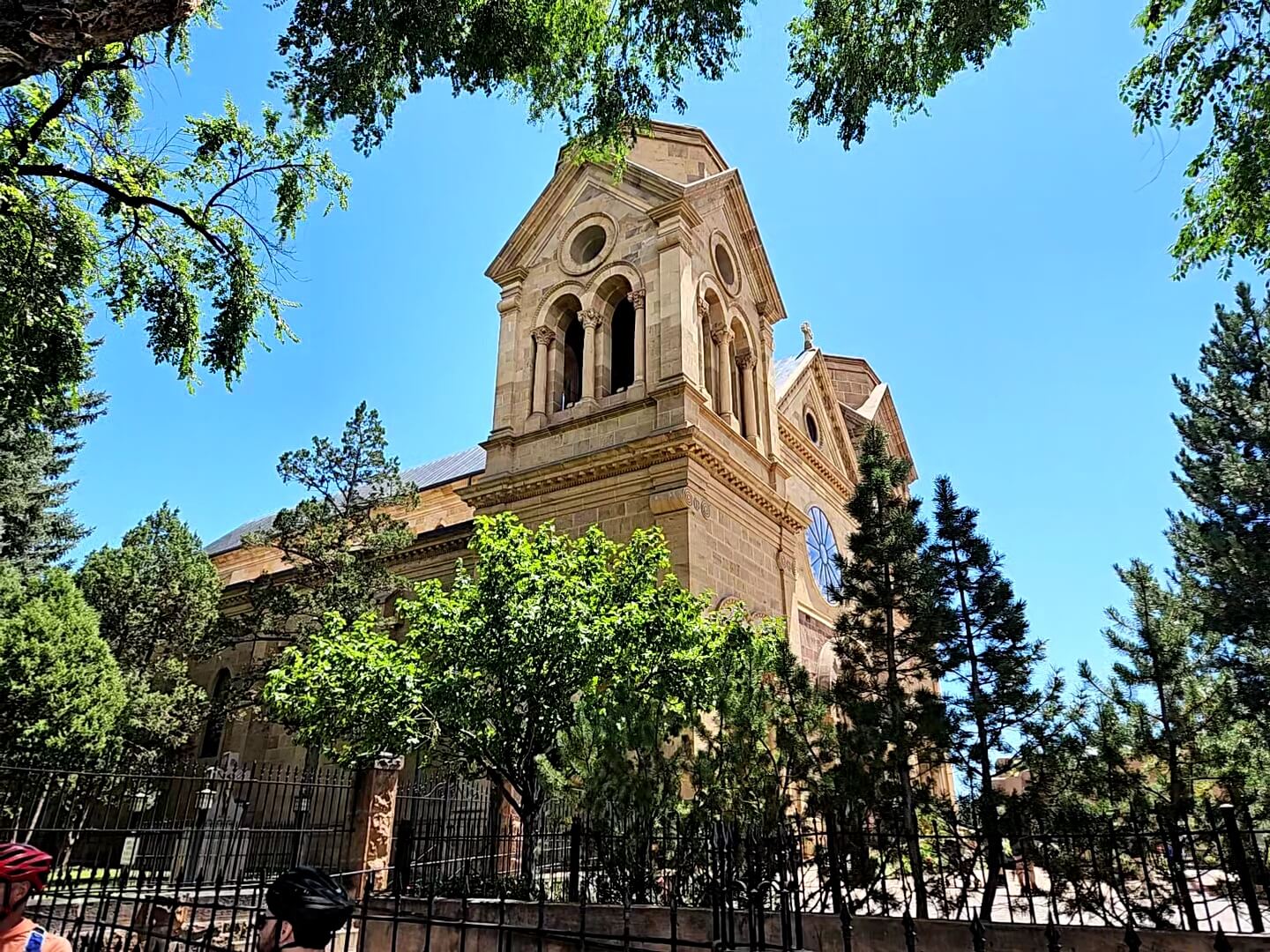Meeting of the Minds at the 2025 Intersociety Summer Conference
The 2025 Intersociety Summer Conference (ISC) was held on 8/1-8/3 in sunny Santa Fe, New Mexico. For those who might not be familiar with this conference, it is an annual meeting that hosts representatives from various radiology-wide and subspecialty-specific professional societies. The goal is to discuss high level issues that affect all radiologists and to share ideas that may help to achieve solutions. Altogether, 29 professional societies nominated representatives for the 2025 ISC. I had the pleasure of joining Peter Eby, FACR, FSBI and Yasmeen Fields, MS, CAE to represent the SBI at this year’s conference.

The theme of the 2025 ISC was “The Degradation of the Academic Mission and the Impact on US Radiology”. After a warm welcome by the conference chair, Frank Lexa, MD, MBA, FACR, Alan Matsumoto, MD, MA, FACR kicked off the first day’s series of talks. Dr. Matsumoto discussed the contributions of the ACR in supporting academic medicine. Foremost, the ACR is our field’s strongest advocate for maintaining departmental revenue. As we all know, “no margin, no mission”. Financial stability provides the funding for our institutions’ academic programs. As an example of the ACR’s efforts, through their advocacy for radiologists, $83 million were recouped for radiologists during the 2024 discussions for Medicare Payment reductions. Further, because the ACR has chapters in all 50 states, DC, Puerto Rico, and Canada, advocacy and lobbying affects legislation in favor of radiologists throughout the federal and state levels. Altogether, the ACR spent $1.3 million in lobbying during 2024. In addition to financial support, the ACR provides education support through programs such as the ACR Education Center, ACR Institute for Radiologic Pathology, and Radiology Leadership Institute. The ACR also supports research with informational databases as well as sponsoring programs such as the Harvey Neiman Health Policy Institute, which researches health policy and advocacy. Finally, clinical guidance and guidelines as well as service excellence and accreditation programs further bolster the preservation of academic quality assurance and research.
Jay Parikh, MD, FACR then gave a keynote lecture titled “The Decline of Academic Radiology”. Dr. Parikh noted that the traditional academic model is challenged by increasing exam volumes, strategic expansion beyond traditional academic medical centers, widespread consolidation of practices, and rising radiologist burnout. As “community academic radiologists” are becoming more commonplace, it now behooves academic practices to determine how to balance the clinical, teaching, and research expectations of radiologists across different practice settings within traditionally academic organizations. Moreover, the omnipresent drive for clinical productivity detracts from other academic pursuits, including research, education, and service. All of these challenges have led to difficulty in retaining early-career radiologists in academic practices.
 Ann Jay, MD then provided an enlightening presentation on “A Higher Calling: Are Medical Education’s Answers Enough?”. Dr. Jay discussed the generational differences among radiologists and trainees in medical education. Younger Millenials and Gen Z tend to learn through curated bite-sized blocks of information, whereas previous generations read textbooks. In the long term, this new form of education may not be as effective or comprehensive. Further, there have been fundamental changes in providing feedback in medical school: some institutions no longer provide grades in preclinical years and grade inflation is more common than in the past. There is also a fear among educators that providing negative feedback to trainees may result in poor teaching evaluations that are detrimental to the educators’ careers. The concept of “kicking the can down the road” was discussed: providing trainees with a “good enough” education and then promote them to the next training step, without addressing potential professionalism or knowledgebase deficiencies. Dr. Jay suggested reframing the narrative so that constructive criticism is productive rather than harmful, the mentality of meeting the minimum bar should not be accepted in medical training, and learning from failure should be normalized.
Ann Jay, MD then provided an enlightening presentation on “A Higher Calling: Are Medical Education’s Answers Enough?”. Dr. Jay discussed the generational differences among radiologists and trainees in medical education. Younger Millenials and Gen Z tend to learn through curated bite-sized blocks of information, whereas previous generations read textbooks. In the long term, this new form of education may not be as effective or comprehensive. Further, there have been fundamental changes in providing feedback in medical school: some institutions no longer provide grades in preclinical years and grade inflation is more common than in the past. There is also a fear among educators that providing negative feedback to trainees may result in poor teaching evaluations that are detrimental to the educators’ careers. The concept of “kicking the can down the road” was discussed: providing trainees with a “good enough” education and then promote them to the next training step, without addressing potential professionalism or knowledgebase deficiencies. Dr. Jay suggested reframing the narrative so that constructive criticism is productive rather than harmful, the mentality of meeting the minimum bar should not be accepted in medical training, and learning from failure should be normalized.
Day one ended with small group breakout sessions, where attendees brainstormed potential solutions to the previously discussed challenges. Proposed ideas included valuing non-RVU activities, providing time for academic pursuits, and restructuring radiology residency program formats. Moreover, mentoring and more clearly showing the professional satisfaction gained in academic careers to trainees may improve recruitment and retention in academic radiology.
Day two began with Laurie Loevner, MD giving a keynote lecture titled “Preserving the Academic Mission – Strategy and Tactics in Busy Division.” Dr. Loevner described her journey as the Division Chief of Neuroradiology at the University of Pennsylvania. When starting in 2014, the radiologists were overworked, disengaged, and burnt out, with resultant delays in study turnaround times, poor teaching scores, and limited research funding. To address these problems, Dr. Loevner restructured the clinical shift coverage to foster subspecialization, crafted individualized career pathways that aligned with faculty’s interests, and regularly coached faculty for career development. Moreover, she was intentional with recruitment to align new radiologists with the needs and vision of the division. The end result was successful recruitment and retention, more predictable working hours, top 10% teaching scores, and increased research funding. Dr. Loevner also emphasized the benefits of multidisciplinary collaboration to develop standardized imaging protocols for various conditions, thereby promoting efficient imaging utilization. Patient-facing radiology, where diagnostic radiologists directly contact patients to discuss their symptoms and convey imaging results, was another tactic that potentially improves radiology report quality and clinical work fulfillment.

Michael Tuite, MD, FACR then presented strategies to handle increasing volumes. First, recruit and retain radiologists is an obvious solution. By catering to new hires that align with the institutions’ location, compensation and benefits model, culture, and career opportunities, recruitment and retention would be more successful. The next strategy was to increase efficiency by optimizing the resources available within the institution: people, processes, and places. The University of Wisconsin-Madison has worked to preserve dedicated academic time, thereby maintaining academic pursuits of its faculty. At the same time, it has developed a team of community radiologists, who primarily focus on clinical work at non-academic, community hospitals and imaging facilities. Dr. Tuite also touched on the use of advanced practice providers to perform minor procedures (e.g., swallow studies and joint injections) and reading room assistants to manage phone calls and study protocols. Other successful strategies to address high volumes include non-teaching remote shifts, clinical productivity bonuses, and weekend on-call work. For some specialty sections, the radiologists’ weekend call work addressed the backlog of outpatient routine imaging exams, while the nascent Emergency Radiology section focused on the STAT exams.
Bruce Forster, MsC, MD, FRCPC, FCAR, FFRRCSI (Hon) then presented Canada’s experience with the Choosing Wisely campaign. There is typically a large backlog of studies waiting to be scanned in Canada, creating interest for appropriate utilization of imaging. Appropriate imaging utilization decreases healthcare costs, decreases wait time for indicated exams, decreases radiation from unnecessary exams, and decreases hospital length of stay for patients awaiting unnecessary imaging. Dr. Forster’s team implemented various clinical decision support (CDS) projects at hospitals in British Columbia, and the results have been promising. For example, after educating clinicians regarding appropriate head CT indications for patients with headaches, there was a 20% decrease in head CT utilization. To be successful, Dr. Forster recommends collaboration and buy-in from clinician colleagues as well as administrators at all levels of the organization. He also recommends targeted CDS for specific exams and conditions rather than global CDS systems.
 Day two ended with a presentation by Brent Wagner, MD, MBA, MLS titled “Update on the ABR and its Impact on the Academic Mission.” Dr. Wagner detailed the ABR volunteer opportunities, including item writing for maintenance of certification and the reinstatement of the oral board exam. These initiatives contribute to the quality of care in radiology by ensuring a baseline level of knowledge in practicing radiologists. Acknowledging that academic radiologists generally have less academic time nowadays, the ABR has addressed these time constraints by making volunteering easier. Specifically, the RADS (ABR exam creation software) has been overhauled and made much easier to use, remote meetings are now more common than in-person meetings for ABR committees, and orientation and training for ABR projects is now usually performed virtually rather than in person. Furthermore, to address the workforce shortage, the ABR has and will continue to facilitate the certification of international medical graduates.
Day two ended with a presentation by Brent Wagner, MD, MBA, MLS titled “Update on the ABR and its Impact on the Academic Mission.” Dr. Wagner detailed the ABR volunteer opportunities, including item writing for maintenance of certification and the reinstatement of the oral board exam. These initiatives contribute to the quality of care in radiology by ensuring a baseline level of knowledge in practicing radiologists. Acknowledging that academic radiologists generally have less academic time nowadays, the ABR has addressed these time constraints by making volunteering easier. Specifically, the RADS (ABR exam creation software) has been overhauled and made much easier to use, remote meetings are now more common than in-person meetings for ABR committees, and orientation and training for ABR projects is now usually performed virtually rather than in person. Furthermore, to address the workforce shortage, the ABR has and will continue to facilitate the certification of international medical graduates.
Overall, The ISC was an enlightening meeting with ample sharing of challenges and potential solutions across radiology’s specialties. Numerous collaborative projects were discussed, many of which will necessitate contributions from SBI members. As we move forward in radiology and breast imaging, it is reassuring to know that we have colleagues across the field who are joining our journey in both the academic and private practice realms. Until next year, best wishes from Santa Fe, “the City Different”!
By Vilert Loving, MD, FSBI
Oschner Health
Vice Chair of Clinical Operations, Imaging Service Line
